A knee jerk response to car driver anger looks set to put Belfast pedestrians and cyclists in direct danger this week. Belfast Harbour and the Department for Infrastructure will open a relief road to alleviate congestion on Queen’s Road, funnelling hundreds of vehicles over the one of the city’s best protected cycleways and Titanic Quarter’s direct pedestrian route to its railway station.
Daily tailbacks have been caused by the introduction of bus lanes on Sydenham Road to support the imminent arrival of the Glider rapid transit system. Queues as long as a mile have been reported on Queen’s Road, the only way in and out of Belfast’s Titanic Quarter.
In the rush to solve the problem, before it create more difficulties for the launch of Glider on 3rd September, last Friday an interim measure was announced to open an emergency access road in the evening peak.
Official statement from Belfast Harbour and @TitanicQuarter in regards to Belfast Rapid Transit traffic issues. pic.twitter.com/NngGkQcHRy
— BelfastHarbour (@BelfastHarbour) August 17, 2018
The exact route has still not been announced, but cones are being stockpiled at these harbour gates along Sydenham Road.
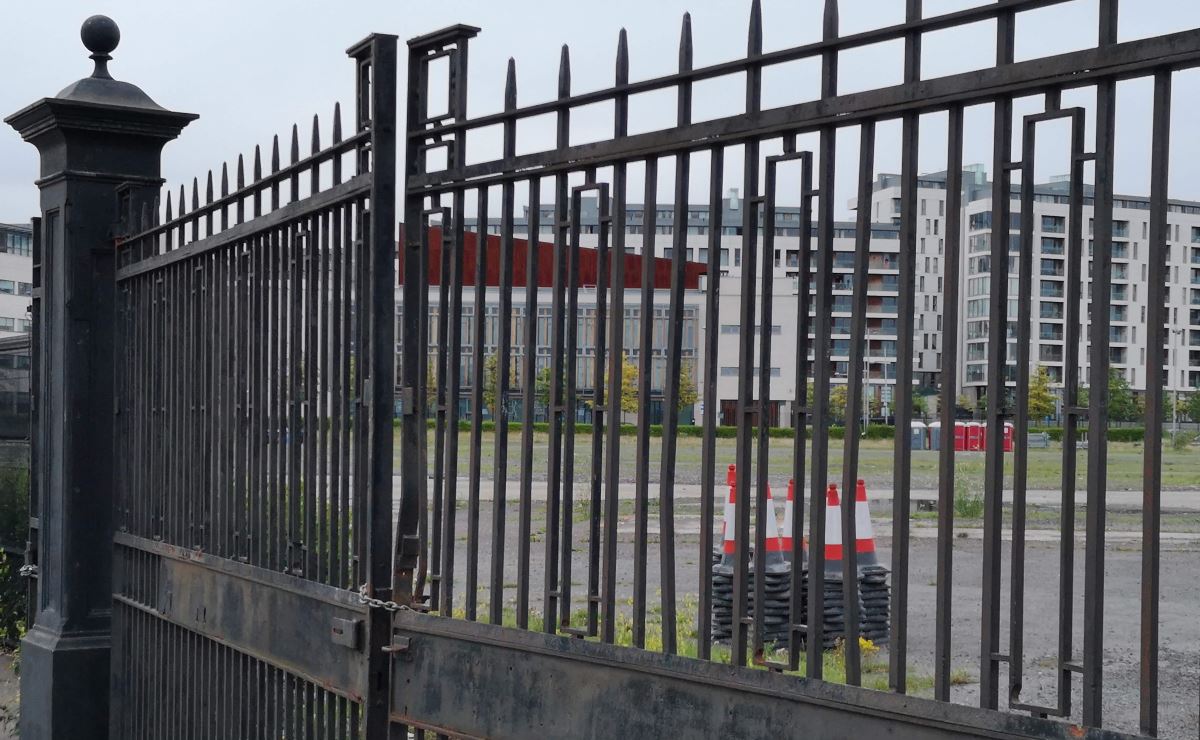
Bikefast understands the interim road will be one-way only during the evening peak, with vehicles only permitted to turn left (countrybound) onto Sydenham Road.
But this interim measure, if it emerges here, presents a huge danger to existing active travellers along Sydenham Road. Hundreds of people walk between Queen’s Road and Titanic Quarter station past these gates every day.

Relief road likely to emerge in the middle of this protected cycleway and pavement, with woeful sight lines at the gate
The quality of the Sydenham Road cycleway means cycling speeds are relatively fast. There are two access roads to car showrooms cross further down the cycleway, but with just a handful of vehicle movements every day there is little conflict. Belfast Harbour and the Department for Infrastructure will be directing hundreds of frustrated car commuters across a cycling facility which most drivers will be unused to navigating.
And the cycleway certainly wasn’t planned with a commuter relief road in mind.
Building new road capacity as a response to vehicle congestion will simply create more congestion, as there is no incentive to change behaviour. Titanic Quarter is still growing, and if one thing is clear from this debacle it’s that too much free parking has been permitted on Queen’s Island. Drop more development in there – residential, office, tourist and industrial – over the next decade and plan for everyone to drive, this current situation will seem like a mere trifle.
But if you absolutely must open a relief road to save Glider’s bacon, it makes far more sense to divert it to the existing dedicated junction at PRONI.

Here at least there will be far less confusion about priority, far fewer conflicts, and reasonably free flow of traffic with the give way exit in the countrybound direction.
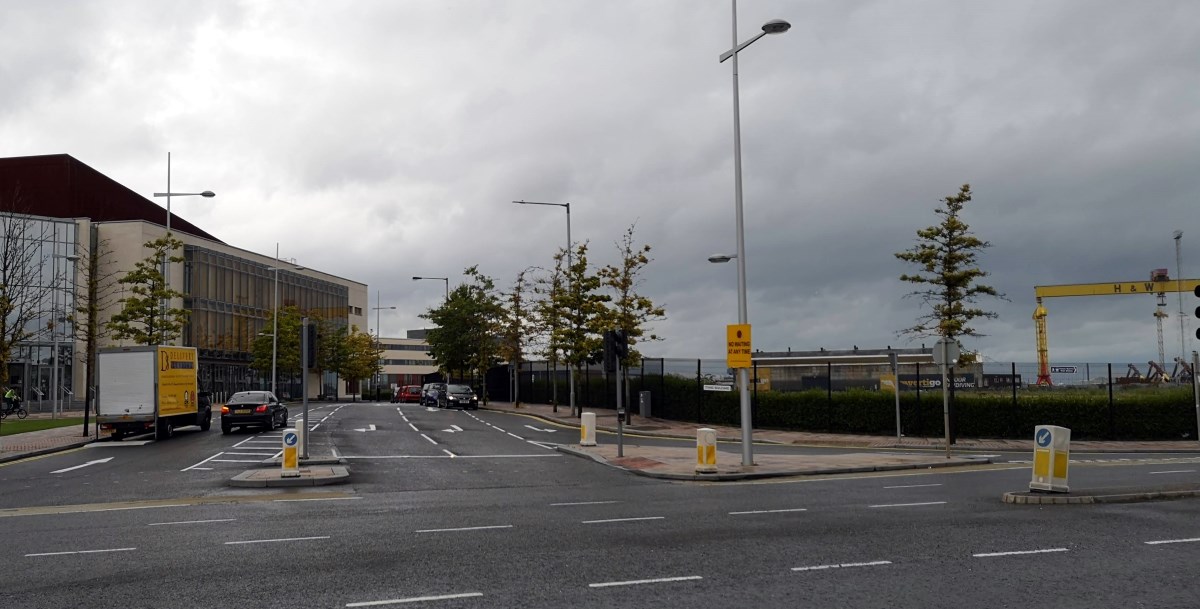
The operation of a relief road must be time-limited to allow Belfast Harbour and the Department for Infrastructure to find a more reasonable permanent solution – ‘more road, more car’ is 1960s thinking.
Meanwhile Belfast Harbour should be immediately investing in the section of Queen’s Road north of Titanic Belfast where buses have been caught in the recent congestion. Glider will absolutely fail if it’s subject to the same delays as car drivers.
Two buses stuck in congestion in the Titanic Quarter… caused by the new bus lanes #queensroad #irony pic.twitter.com/5iVY2MBbnT
— Fabian Campbell-West (@fcw11) August 14, 2018
Queen’s Road’s legacy as an industrial access road means it has a generous width. With Belfast Harbour flush following a record financial performance it can move swiftly to rebalance the road to ensure free flow for Glider while maintaining access for everyone else.
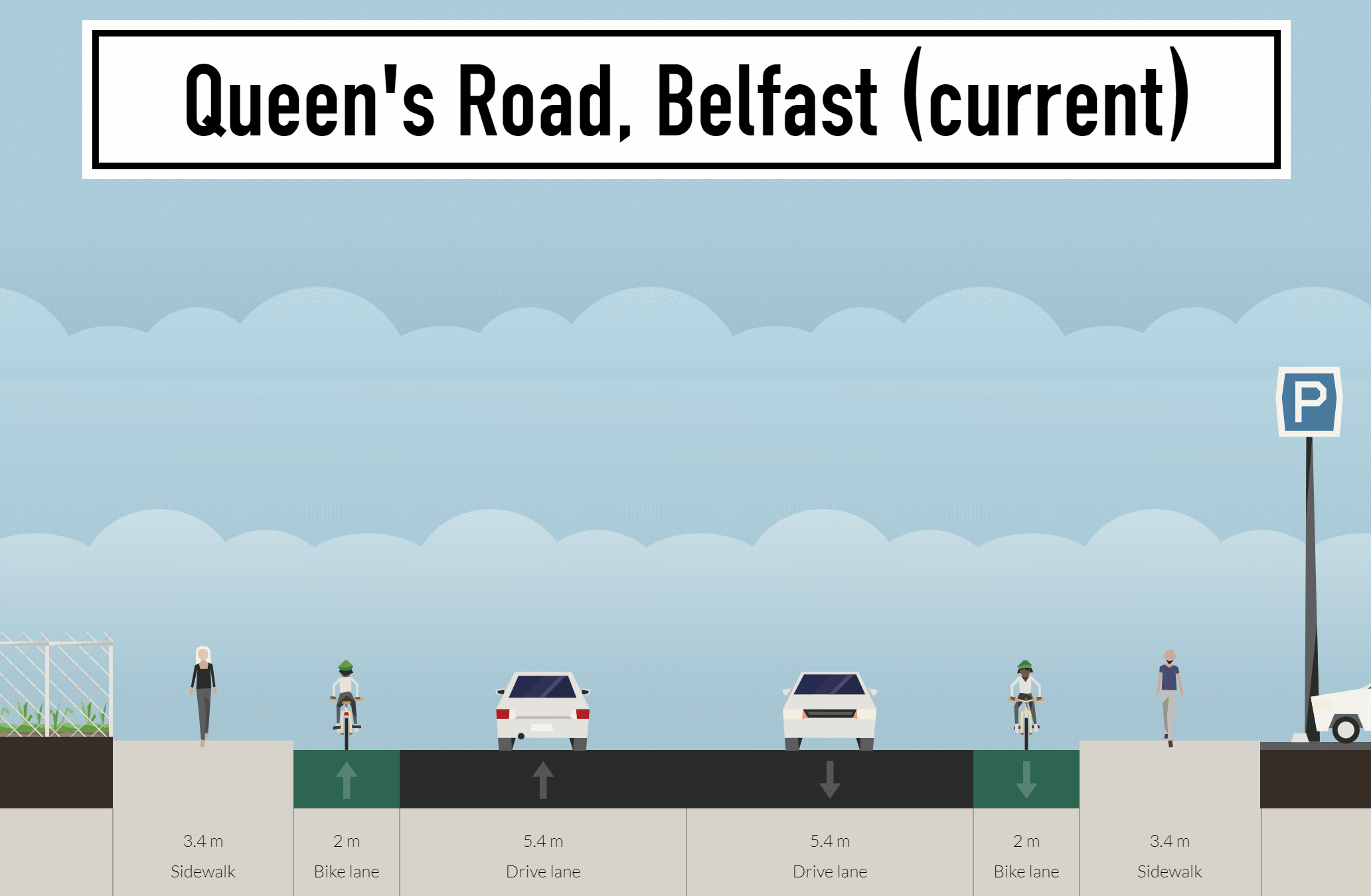
This Streetmix-created image may be reused anywhere, for any purpose, under the Creative Commons Attribution-ShareAlike 4.0 International License.
The current average widths are shown above – overly-wide vehicle lanes, 2 metre wide (but not particularly safe) painted cycle lanes for the whole length and very generous footways for a road which has sparse footfall.
Bus lanes can be accommodated in a revised set-up, retaining the cycling space and keeping a good width of footway.
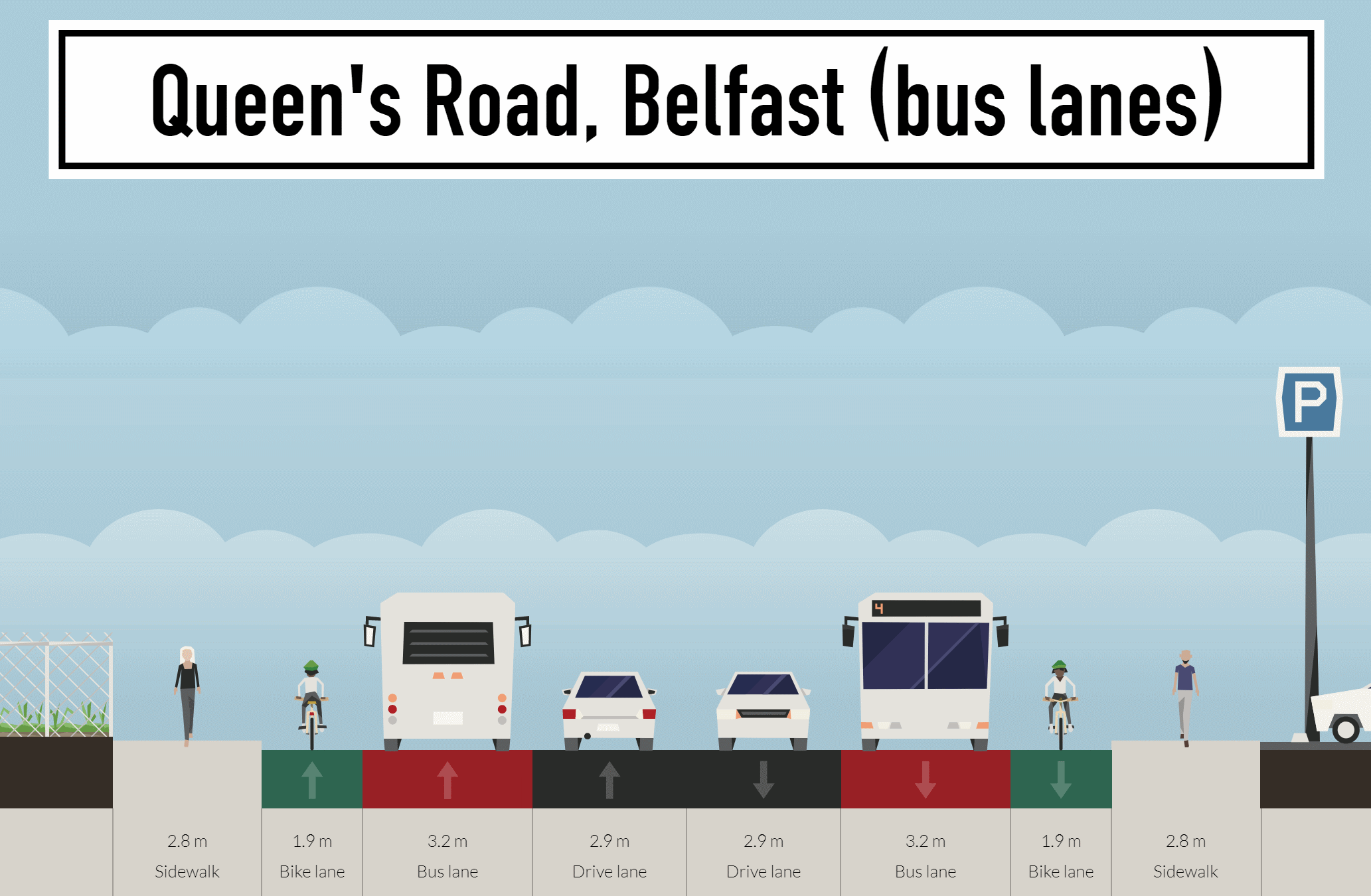
This Streetmix-created image may be reused anywhere, for any purpose, under the Creative Commons Attribution-ShareAlike 4.0 International License.
This would ensure continuity of service for Glider and tourist buses regardless of how the congestion issues play out over the long term.
The reason for showing this set-up should be obvious to those implementing road changes – any move to take away existing cycling space to suit the needs of car drivers is completely unacceptable.
The Glider project has run into serious issues which should have been foreseen, but such a hasty move to pander to the more extreme voices will have unintended consequences. Pedestrian and cycling safety is paramount in any transport planning, and to relegate that below drivers’ needs is a dangerous road to take. As nights begin to draw in and the evening rush hour gets darker, if this relief road is still your only solution then someone is going to get badly hurt on Sydenham Road – and neither Glider nor faster driving home is worth that price.

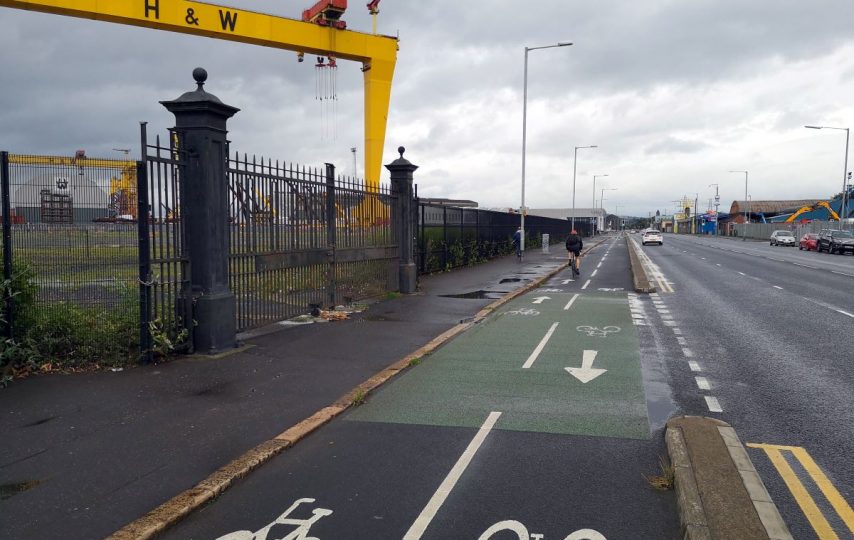


I just heard from a rumour this morning that the current plans involve a 4 lane relief road with NO TRAFFIC LIGHTS at the junction with the two-way cycle lane. Apparently the consultation (which I could find no trace of online) is now closed. Is it too late to do anything? They’ve obviously learnt nothing from the Alfred St debacle or the regular near misses at the Audi Garage and other cross-points on the two-way lane. The potential risk at this new junction would obviously be much higher due to the volume of traffic.